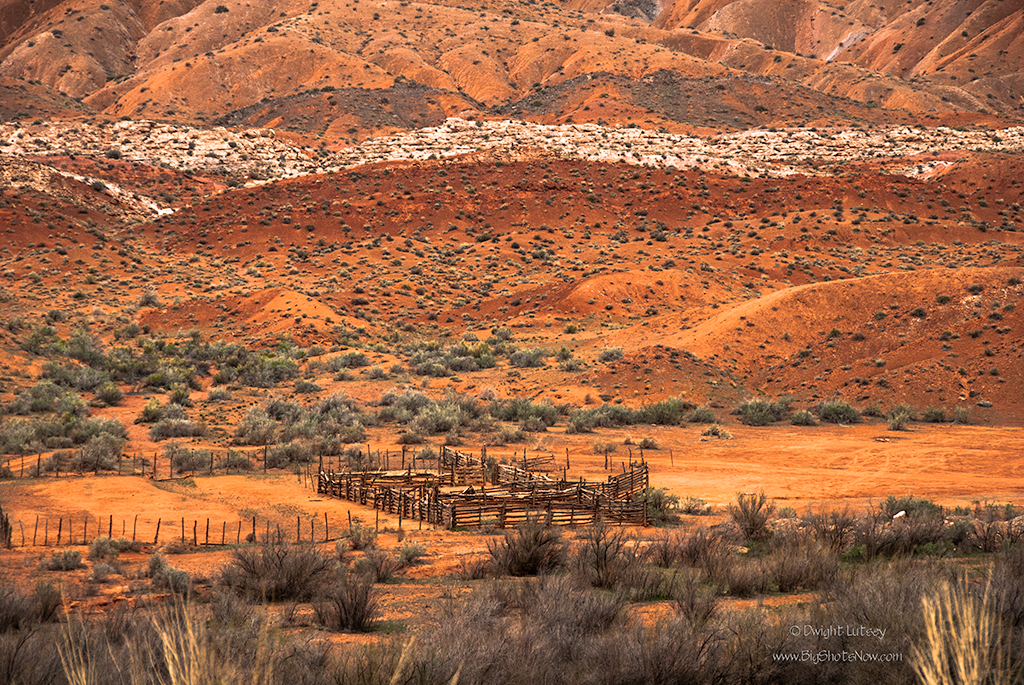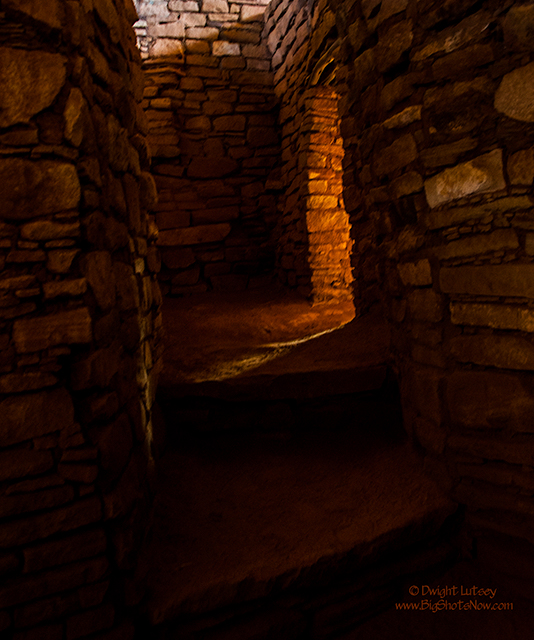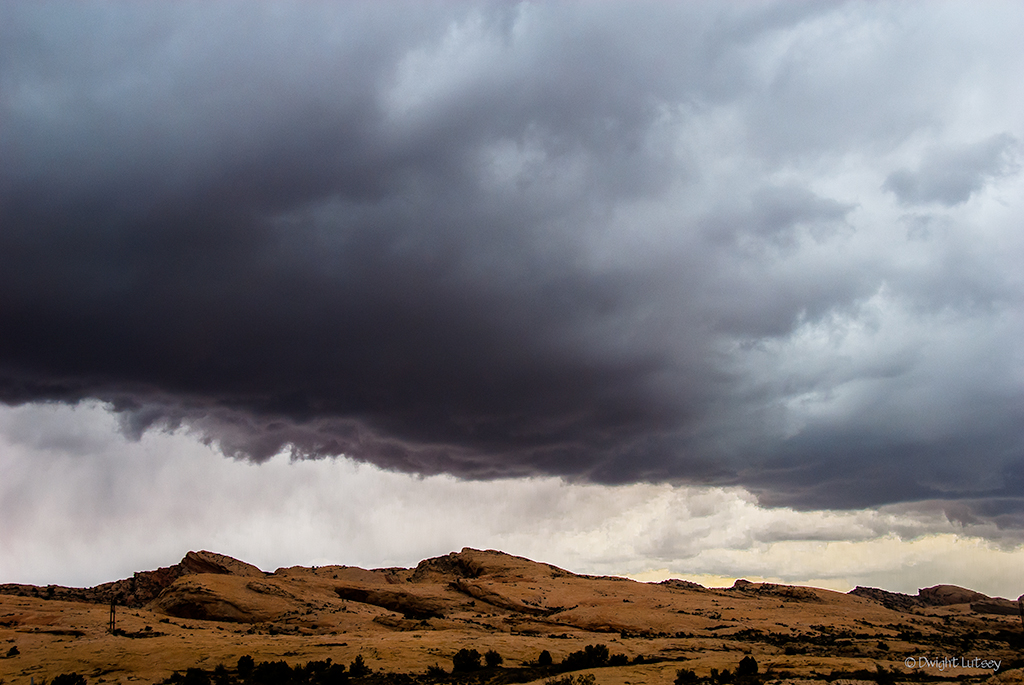Out here near Hovenweep National Monument the vegetation is sparse and water more so. In land that seems so inhospitable there is a strong ranching tradition. If you pay attention you can still see cattle spread out over hundred’s if not thousands of acres. They’re rangy, long-horned, fleet as a deer and people-wise. You can see one then drive for miles before seeing another, yet they’re there and when it’s time they must be rounded up. A job that requires locating, herding and gathering them for shipment to the meat markets back east.
That ‘s what these structures are for. Holding pens with spaces to separate the cattle as needed and chutes to load the cattle onto trucks to be hauled away. The area around Hovenweep is filled with small narrow canyons that drain what water there is from places like Cajon mesa up on the Utah-Colorado border into streams like McElmo creek and the San Juan river, creating terrain that is a very difficult environment to work in. Collecting the cattle means hunting through this country and getting them back over the hills and through the valleys to collection points like this one. A long, tough, hot job.
This cattle business is not for the faint of heart as the ranchers battle the desert with all its hardships and try to keep their heads above water, if there was any. These are tough folks and many of them have been doing this for generations, somehow managing to keep it working and kind of productive. Like the beautiful but harsh red rock country it feels like there will always be someone out here trying to make a living. The country alone, with its bands of colors and incredible shapes, makes some of the struggle worthwhile. The occasional dollar helps too.
For the traveler passing through none of that is apparent. They are more intent on watching the buttes and mesas, the intense color of the hills and the wide open spaces, thinking more about getting to the next town. The holding pens that are so important to the rancher are just another feature to take in on the way to somewhere else, another view of the southwest, seen, enjoyed and forgotten in a moment. But for the photographer and someone who loves everything about this country, it is more than that. It is another story to attach to the image and add to the portfolio that is the experience of the Southwest. Life as hard as this shouldn’t be forgotten.




You must be logged in to post a comment.